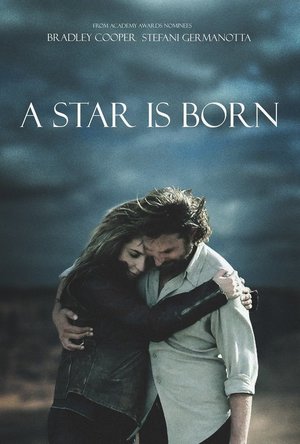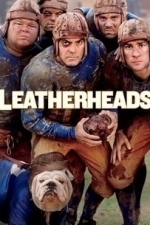Bob Mann (459 KP) rated Captain Fantastic (2016) in Movies
Sep 29, 2021
“Captain Fantastic” starts with a dramatic hunting expedition introducing us to the unusual Cash family. Dad Ben (Viggo Mortensen) is bringing up his six kids – Bodevan, Kielyr, Vespyr, Rellian, Zaja and Nai – in the wilds of Washington state. Ben takes home-schooling to a completely new level, with intense study and examinations in quantum physics, philosophy and politics matched with a militaristic approach to weapons-training and physical fitness. Ben also teaches extreme self-sufficiency, most evident during a dramatic rock-climbing sequence.
Where is their mum in all of this? That would be a spoiler (so don’t watch the trailer either) but is central to the plot as the family board their old camper van – “Steve” – on a road trip back to the ‘real world’ and the children’s grandparents – the crusty and assertive Jack (a marvellous Frank Langella) and Abigail (Ann Dowd). What follows is filled with black humour, tragedy, not just one but two amazing funeral services and one of the most extraordinarily black and comic laying-to-rests ever seen on the big screen.
Viggo Mortensen is… well… fantastic in his portrayal, getting to run the full gamut of joy, grief, self-doubt, guilt and despair during the movie’s run-time. He’s clearly not going to win the Oscar on Sunday – surely Casey Affleck must be a slam-dunk for that – but this is a well-judged nomination by the Academy.
While the focus is on Mortensen, this shouldn’t overshadow the performances of some of the rest of the young cast, and I would specifically call out those of George MacKay and young Shree Crooks as the youngest of the kids. MacKay has been building up an impressive run of UK-based films with “Sunshine on Leith” and “Pride” but with this (and his key role in the recent TV mini-series “11.22.63”) he should see a break-through to more mainstream feature roles. In “Captain Fantastic” his socially-inept proposal to the delectable Claire (Erin Moriaty) is one of the high-points of the film. He is a name to watch, for sure.
And young Ms Crooks should be given a special honorary Oscar for the ability to learn such dense portions of script and deliver them so faultlessly!
The whole cast in fact was nominated for the Screen Actors Guild Award for Outstanding Performance by a Cast in a Motion Picture – one of my favourite award categories, but beaten by “Hidden Figures”. And it is that sort of film: a really great ensemble effort.
The film is written and directed by Matt Ross, only his second feature since 2012’s “28 Hotel Rooms” (which I was not aware of, but would now like to seek out). I thought it was terrific; deeply comedic; riveting from beginning to end; a roller-coaster of emotion and ultimately a feelgood classic on the value of family that I will remember fondly for a long time. Once again, the second film this week, that would have made me reconsider my “top films of 2016” list. I strongly recommend that you seek this out on download or DVD and give it a try.
Smashbomb (4687 KP) created a post in Smashbomb AMA
Mar 26, 2019 (Updated Mar 26, 2019)
Ivana A. | Diary of Difference (1171 KP) rated Piasa in Books
Aug 21, 2018
https://diaryofdifference.com/2018/04/11/piasa-michael-kott-book-review/
The author - Mr. Michael Kott sent me this book for an honest review! I honestly enjoyed reading every single page, and I couldn't put the book down, which deprived me from some sleep a few nights. This is what I thought about PIASA:
This is a very warm story that covers the life of Sara, a young little girl (don’t call her that, she’ll get angry!). My apologies - a young fifteen-year-old lady that survives a car accident while her whole family dies. In times when destiny is hard to accept, she will get involved into resolving the mystery behind the legend of the Piasa, and this adventure might actually mean a new start in life for her!
For a lady of this age, this destiny is extremely hard to accept, and on top of that, she has a few scars that will mark that experience probably for the rest of her life.
Her life is not easy - she lost her family, and all of her belongings, and here she is now, at her Aunt Claire’s hotel, still unsure whether she is ready to move forward with life.
Sara is a very unusual character. I have to admit that at times, she would made me cringe. Some of the things she says and does doesn’t comply with my opinion, but there are things that I really loved about her. I loved the way she is coping with all the challenges she has, after everything that she’s been through, her ability to admire someone the way she admires Mike, to start believing again, even despite everything that happens around her, to seize the day and enjoy the moments that life can offer. I love how she would find hope even in the darkest of places.
Even though I really liked the character of Sara, my favourite character has to be Mike. The way he thinks, acts and motivates everyone around him is unique. Mike is one of the characters that will make you realise and question some of your decisions in life.
The only character I couldn’t connect to at all was Pamela. I honestly am not sure why - it might be that there weren’t too many situations involving her that would make me care.
The story hooks you onto it and it is hard to put it down. I have never heard about the legend of the Piasa before, and one part of me wanted to find out before reading the book. I am glad that I didn’t, as I found out slowly about it, page by page, and that is an experience that will stay with me.
I love how it is presented that life is so unpredictable in so many ways, that mysteries are all around us, and that we are able to move forward and win - only if we wish to believe that we can do it. And sometimes, we are in doubt, and that is when precious people come into our lives - it all happens with a reason.
The only thing I wish was different about ‘’Piasa’’ is that I could’ve read this amazing book way, way sooner, when I was fifteen. I can’t wait to read the second book of this series - Cryptid.
<a href="https://diaryofdifference.com/">Blog</a>; | <a href="https://www.facebook.com/diaryofdifference/">Facebook</a>; | <a href="https://twitter.com/DiaryDifference">Twitter</a>; | <a href="http://innahcrazy.tumblr.com/">Tumblr</a>; | <a href="https://www.instagram.com/diaryofdifference/">Instagram</a>; | <a href="https://www.pinterest.co.uk/diaryofdifference/pins/">Pinterest</a>; |
Darren (1599 KP) rated A Star Is Born (2018) in Movies
Jun 20, 2019
When Ally becomes an overnight success story the two-start performing together which only attractions more record labels who come calling to make Ally the next biggest star in the music world which soon sees her become more famous than Jack whose own problems could bring an end to his fame.
Thoughts on A Star is Born
Characters – Ally is a hotel worker that performers in a local drag bar after being rejected by record labels before. She meets rock star Jack who encourages to perform, first with him and soon the world wants to see her become the biggest star in the music industry. Ally must learn about the world around her, one she has never stepped foot in before or become consumed by it. Jack is the rock star who sees Ally believing she could become a star, he offers her a chance to perform which sets her on her way, Jack however has his own problems with drinks and drugs would could finish his own career just as Ally’s is about to take off. These two characters do take centre stage for the most part, we do see family that support as well as friends who see their friend get to levels of fame they never thought they could.
Performances – Bradley Cooper gives one of his best performances of his career here, not just on front of the camera, but behind it too. He manages to make us feel like his problems are real, which are problem many musicians could be facing. Lady Gaga was always going to be a wonderful choice for the singing side of the film, it was the acting side people wanted to see if she could handle, she does a good job through the film managing to show the bond the two have throughout the film. the supporting cast are good without needing to be challenged to reach the levels of the lead two actors.
Story – The story follows the rise of a musician after being discovered by an alcoholic rock star. We know this is a remake, so we know this had been modernised to tell an old story which deals with the modern problems of fame for musicians. We see how one side is taking every opportunity thrown her way and the other than has been watching his career fade away because of alcoholism and drug abuse. This is a great story of how important taking chances are and how success can ruin lives. The story does however become slightly slow paced because we just jump into a song to cover up anything that needs to be talked about more.
Music/Romance – The music in the film is good with songs that Gaga performs with ease. The romance between the two shows how they can support each other through the lives they didn’t know they would be going through.
Settings – The film uses the settings to show the journey that Ally takes from the small venue to awards ceremony showing here rise to fame.
Scene of the Movie – First song.
That Moment That Annoyed Me – The rise feels too fast.
Final Thoughts – This is a great look at how the fame can affect lives in the music industry, we get strong performances from Cooper and Gaga who both shine through the film.
Overall: Great Music based movie.
https://moviesreview101.com/2019/01/01/abc-film-challenge-best-of-2018-a-a-star-is-born-2018/
Gareth von Kallenbach (980 KP) rated Leatherheads (2008) in Movies
Aug 14, 2019
Cut to George Clooney’s character, the aging “Dodge Connelly”, playing pro-football in mire-like conditions; his audience a tangle of bored fans and uninspired locals. It is a far cry from the opulent circumstance of college-level football. Men, bedraggled and sweating under the promise of returning to work at the mines and fields if their football dreams go under, play with reckless abandon and forgotten morals in hopes of winning that next game. Yet, as fate will go, the Bulldogs lose their sponsorship and the team goes under, forcing men to return to their day-jobs and leaving Dodge without a future. The man has no marketable skills, no trade. He is a football player and is determined to see his team back in the game.
Of course, that isn’t the only bit of chaos. There has to be a girl; there is always a girl involved in stories like these. Enter Renée Zellweger’s character, the vivacious and equally tenacious “Lexie Littleton” – a news reporter for the Tribune. Lexie is on a mission to expose Carter Rutherford and get to the bottom of his infamous war story. It comes to no surprise that when Lexie and Dodge meet in a hotel lobby awaiting the arrival of Carter Rutherford and his manager, “CC Frazier” (played by Jonathan Pryce), that sparks immediately fly between them. Dodge has a proposal for CC and Carter: have Carter take a leave of absence from Princeton to play pro-football for the Bulldogs, thus saving pro-football and paying Carter for his efforts. Naturally, CC wants a cut from the profits and finds a way to do so to accommodate his own needs. Dodge, without any other alternative, agrees.
Meanwhile, Lexie is working her magic on Carter to try and weasel the true story out of him as best she can. Try as she might she cannot ignore Dodge, no matter how acid her tongue wags in his direction. In the end, Lexie gets her story yet realizes she must decide between exposing the truth or letting America bask in the glory of its self-proclaimed war-hero.
In review, there is a true chemistry between all of the main characters and both Zellweger and Clooney do a good job of conveying the vehement (and callous) emotion between Lexie and Dodge. However, no matter how funny the banter becomes between these three main characters or how well the scene plugs along, in the end the movie comes off as a passable but by no means memorable. Betimes it seems to stretch on and on and more then once I found myself looking at my clock. In truth, the movie didn’t need to be nearly two hours long. It felt two hours long which is never a good thing, especially when we’re talking about theatre seats.
That said, I thought the movie was a cute and enjoyable comedy. It won’t crack your funny bone but it will certainly tickle it more then once. All in all I give it 3.5 out of 5. It succeeded in making me laugh and did keep me entertained. Above all, I’m sure many will find it enjoyable to some extent.
Phillip McSween (751 KP) rated Forgetting Sarah Marshall (2008) in Movies
Jan 15, 2019
Acting: 10
Jason Segel plays the perfect broken man in his role as Peter. He carries a pitifulness that’s endearing, a guy easy to root for. From a comedic standpoint, his timing is always right there and it feels extremely natural as if we’re being introduced to a real person. I can only think of a handful of actors that could pull off the role as successfully as Segel. A number of other roles solidified the acting in the movie as well, but Segel carried the movie in my opinion.
Beginning: 10
Forgetting Sarah Marshall grabs your funny bone from jump and sets the tone. The first ten minutes introduces us to Peter as we watch him go about his boring, but hilarious day. Everytime I think about the breakup scene between him and Sarah (Kristen Bell), it still cracks me up. You knew right away the rest of the film was going to be classic.
Characters: 10
The movie sports a solid cast of characters with just enough originality to keep things interesting without going overboard. You’ve got Rachel (Mila Kunis), the badass front desk attendant who gives Peter a reason to enjoy life again. Then there’s the British rockstar and the hotel attendant who is obsessed with him. I could go on as these are just a handful of the crew that make this movie shine.
Cinematography/Visuals: 10
Conflict: 10
Genre: 10
Others won’t agree, but this is the funniest movie I’ve ever seen. It has everything we want in a comedy. It’s funny without having to go over the top to try. It succeeds with a comical real-life premise that has the right characters surrounding it. Not only does it make you laugh, but it makes you feel as well. But, most importantly, it makes you laugh…A LOT. It hits you with several different types of funny from the characters themselves to the subtle jabs.
Memorability: 10
A classic movie has scenes that stick out in your head for years to come. Forgetting Sarah Marshall has a number of those scenes. When the towel drops. Peter crying naked on the floor then having to defend himself. Dracula musical. The surf scene. I could go on…These are scenes that, by themselves, could make a movie memorable. Together, they made Forgetting Sarah Marshall a classic.
Pace: 10
Plot: 10
I know what you’re thinking. What are the chances he goes on vacation and ends up at the exact same resort as his ex at the same exact time? I thought about this a lot and concluded that it could have been completely conceivable that Peter and Sarah had talked about that resort in the past. Alternatively they could have even had plans to go to that resort together during that week and the breakup changed that. Ultimately I decided it didn’t need to completely make sense. It’s a comedy and it’s unique enough for me to not have gotten bogged down in the “how”.
Resolution: 10
Starts just like it ends: Perfectly. It fits both for Peter and Rachel, definitely putting a smile on my face. It works on a lot of levels, touching but still maintaining the level of humor that carried the film to this point.
Overall: 100
A film is always the sum of its parts. Forgetting Sarah Marshall does everything right and then some. From its beautiful cinematics (thank you, Hawaii) to downright perfect pacing, it succeeds on every level. Classic.

Learn German: MosaLingua
Education and Travel
App
Learn German in no time! MosaLingua's effective and addictive teaching method will help you memorize...

Learn Russian - MosaLingua
Education and Travel
App
Is it possible to brush up on your Russian, or even learn the language starting at zero, if you...

Talking Thai <> English Dictionary+Phrasebook
Reference and Travel
App
Whether you're on a short trip to Thailand, working with Thais, or studying the Thai language...

Tapzo: Cabs, Food, Recharge
Lifestyle and Travel
App
Tapzo, India's first All-in-One App : Recharge prepaid mobile & DTH, Pay postpaid mobile,...




